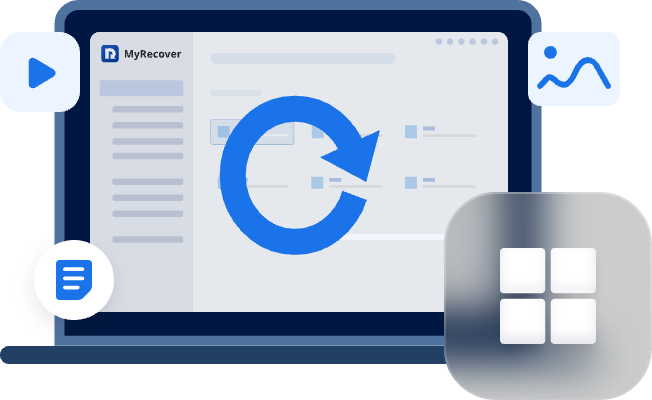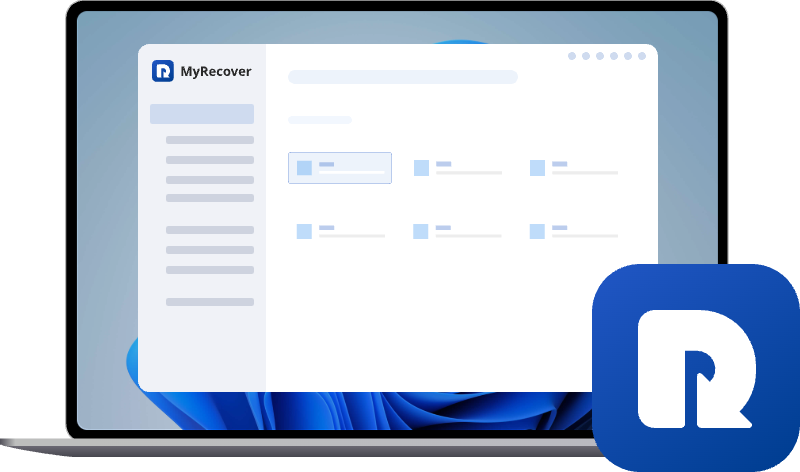How to Recover Files from Pen Drive Which is Not Visible?
When a pen drive is not recognized or visible on your system, recovering your important files can seem impossible. This article explores an effective method for how to recover files from a pendrive which is not visible as wel as troubleshooting skills to make it visible again.
Why Pen Drive Becomes Invisible on Windows?
Pen drives (also known as USB flash drives) are compact and portable storage devices widely used in everyday life and work due to their large capacity, fast data transfer, and strong compatibility. Whether you're transferring documents, backing up photos, or creating bootable drives, a pen drive can handle it with ease. Since nearly all computers are equipped with USB ports, pen drives have become an essential tool for students, office workers, and IT professionals alike.
However, despite their convenience, pen drives can sometimes suddenly "disappear" on a Windows system—becoming unrecognized or inaccessible. They may become invisible or not show up on Windows for the following common causes:
1. Drive Letter Conflict
Windows assigns drive letters (e.g., D:, E:) to storage devices.If two devices conflict or no letter is assigned, the pen drive might not appear in File Explorer.
2. Corrupted File System
If the pen drive's file system is corrupted (e.g., RAW or unreadable), Windows can't mount it properly.
3. Outdated or Missing Drivers
Windows may fail to recognize the device if USB or chipset drivers are outdated or malfunctioning.
4. USB Port or Hardware Issues
A damaged USB port, faulty cable, or worn-out flash drive can cause recognition issues.
5. Disabled Drive in BIOS/UEFI
Some BIOS settings may disable USB ports for security or power-saving reasons.
6. Partition Issues
The drive may not have a recognizable partition or any partition at all.
3 Steps: Recover Files from Pen Drive Which is Not Visible
Losing access to your pen drive can be frustrating and alarming, especially when it contains important documents, photos, or work files. Many users panic when the USB drive doesn't show up in Windows, fearing that their data is gone forever.
But don't worry—in most cases, the data is still there. It's just temporarily inaccessible due to system, driver, or file system issues.Instead of trying complex manual fixes, the easiest and most effective way to retrieve files from a flash drive that is not recognized is using a professional recovery tool like MyRecover.
- ★Why Choose MyRecover?
- Recover data from invisible, unrecognized, or even corrupted USB drives.
- Recover files from formatted drive, or unallocated hard drives.
- User-friendly interface with simple click-through recovery.
- Allows file preview before restoring.
- High recovery success rate, even in severe cases.
Easy Steps to Recover Files Using MyRecover
Install the MyRecover software on your computer and take the following steps to recover files from pen drive which is not visible.
Step 1. Scan the Unrecognized Pen Drive
Launch MyRecover, you'll see a list of all connected storage devices. Even if your pen drive doesn't appear under "This PC," MyRecover may still recognize it as a removable device or show it as a drive with no label. Select the pen drive that matches your device, and click the "Scan" button to begin.
if it is not showing in MyRecover, either, there are some chances the pen drive partition is lost or deleted. In this case, turn to "Partition Lost Recovery" under the section "Advanced Recovery". This feature can scan the entire system to search for all missing or deleted partitions, and then help you recover data from lost partition.
Step 2. Preview and Select Files You Need to Recover
MyRecover will automatically initiate a "Quick Scan" first that searches for recently deleted files and common recoverable data. And you can run a "Deep Scan"manually to thoroughly search every sector of the drive, allowing it to detect hidden, lost, or corrupted files that may not be visible or accessible by Windows.
Once the scan completes, you'll be able to browse through the categories or use the search bar to quickly locate specific files. Besides, you can preview files before recovering them to verify they are intact and exactly what you want to recover. After you've identified the necessary files, simply check the boxes next to each item, and click on "Recover" button.
Step 3. Recover Files from Unrecognized Pen Drive to A Safe Location
MyRecover will prompt you to choose a destination folder. It's strongly recommended that you do not save the recovered files back to the same pen drive. This is to avoid overwriting any remaining recoverable data and to prevent further damage to the USB drive if it's corrupted. Instead, choose a location on your local hard drive or another external device with sufficient storage space.
Once the recovery process is complete, you can safely access your files by clicking "Browse" button or the new path in the mini window which pops out to tell how many files have been recovered successfully.
Almost Done! How to Make Pen Drive Visible / Usable Again in Windows
At this stage, if you're sure everything has been recovered successfullyfrom the pen drive which is not visible, you might want to make it usable, recognized and visible again. According to the previously mentioned factors which may cause pen drive not recognized and accessible, you can try the following steps to make it usable once again.
1. Try the Pen Drive on Another Computer or Port
Sometimes, the issue isn't with the pen drive itself but with the specific USB port or the computer's drivers. To rule this out, try plugging the pen drive into a different USB port on the same PC. If that doesn't work, test it on another computer entirely.
If the drive works elsewhere, the problem likely lies with the original USB port, a corrupted driver, or a system configuration issue on your primary machine. This simple test can quickly help you determine whether the problem is with the hardware or the pen drive.
2. Check if the Pen Drive Is Detected in Disk Management
Before assuming your pen drive is completely unreadable, it's worth checking whether Windows can detect it at the system level using Disk Management. Disk Management is a built-in Windows utility that allows you to view and manage all storage devices connected to your computer—even those that don't show up in File Explorer.
1. Plug the pen drive into your PC.
2. Press "Win + X" and select "Disk Management".
3. Look for a volume labeled "Removable" or any disk without a drive letter.
If the drive is visible in Disk Management but has no letter: Right-click it, choose "Change Drive Letter and Paths" and "Add" a letter (e.g., G:) which is not used by other drives.
3. Use CHKDSK to Repair File System
If your pen drive is detected but still inaccessible or showing errors, the problem might be a corrupted file system. In such cases, Windows' built-in CHKDSK tool can help detect and fix logical errors on the drive without deleting your files.
To run CHKDSK, first make sure your pen drive is assigned a drive letter. Then, open "Command Prompt" as an administrator: press Win+X, choose "Command Prompt (Admin)".
In the window that appears, type the following command and press Enter: chkdsk g: /f /r (Replace "G:" with your actual drive letter.)
Windows will begin scanning the drive for file system errors and attempt to fix any issues it finds. This process may take several minutes depending on the size and condition of the drive. After CHKDSK finishes, safely eject the pen drive and reconnect it.
4. Update or Reinstall USB Drivers
If your pen drive isn't recognized at all, even in Disk Management, it could be due to outdated, corrupted, or missing USB drivers. Ensuring your USB drivers are up to date is a critical step in troubleshooting device detection issues.
1. Press "Win + X" > "Device Manager".
2. Expand "Universal Serial Bus controllers".
3. Right-click on "USB Mass Storage Device" and then "Update Driver" .
You can allow Windows to search automatically for updated driver software. If updating doesn't help, try uninstalling the problematic driver. Right-click the USB device and choose "Uninstall device", then restart your computer. Windows will automatically reinstall the driver upon reboot.
5. Enabled Drive in BIOS/UEFI
In some cases, your pen drive may not be recognized simply because USB ports are "disabled at the BIOS or UEFI level". This can happen due to factory settings, security restrictions, or power-saving configurations—especially on corporate or older machines.
To check and change this, restart your computer and press the key shown on-screen (commonly "F2", "Del", "Esc", or "F10") to enter BIOS/UEFI. Once inside, navigate to "Advanced", "Integrated Peripherals", or a similar section. Find "USB Configuration"and ensure options like "USB Ports", "Legacy USB Support", or "External USB Devices"are set to "Enabled".
After making changes, save the settings and restart your computer. If the USB port was disabled, enabling it in BIOS/UEFI can immediately restore detection of your pen drive in Windows.
Conclusion
Pen drives are essential and convenient tools for data storage and transfer, but they can sometimes become invisible or unrecognized in Windows due to various reasons such as drive letter conflicts, corrupted file systems, driver issues, or BIOS settings. Fortunately, you can use professional software like MyRecover to recover files from pen drive which is not visible with ease. Besides, this software is also able to recover data from SSDs, HDDs, SD cards and over 500 storage devices.
After successfully recovering your data, following the troubleshooting steps can help restore your pen drive's usability. By understanding these common issues and solutions, you can confidently handle pen drive problems and avoid data loss in the future.


